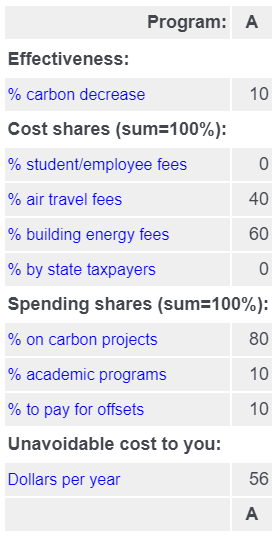Carbon-reduction programs in higher education: Demand as a function of program attributes and stakeholder characteristics

Abstract
Several universities have implemented, and numerous others are considering, internal carbon fee or pricing programs intended to reduce greenhouse gas emissions, finance carbon reduction programs, signal sustainability and/or prepare for future mandatory carbon reductions. To learn about preferences over potential program designs, we employ survey-based choice experiments concerning potential internal carbon-pricing programs at a flagship public university. More than 1,000 stakeholders each consider several hypothetical programs which vary in their costs, emission reductions, the initial incidence of their costs, and uses of the resulting revenue. With corrections for systematic sample selection, we estimate a random-utility model with systematic preference heterogeneity which permits us to simulate, for different constituencies, the distribution of willingness to pay for different types of programs. Median individual willlingness-to-pay amounts predict the highest cost for any given program that would be approved in a campus referendum. Mean individual willingness-to-pay amounts can be used for benefit-cost assessments.